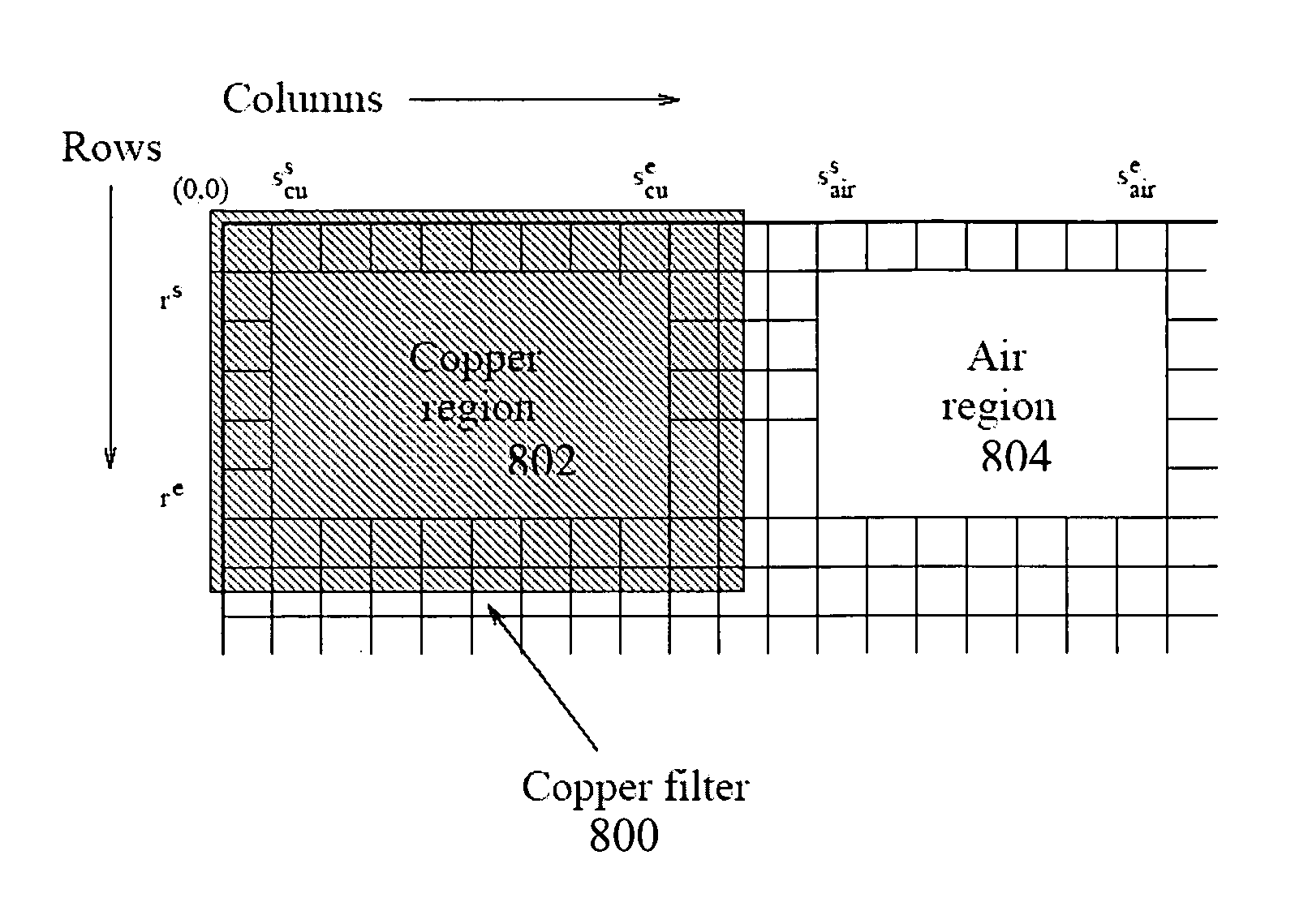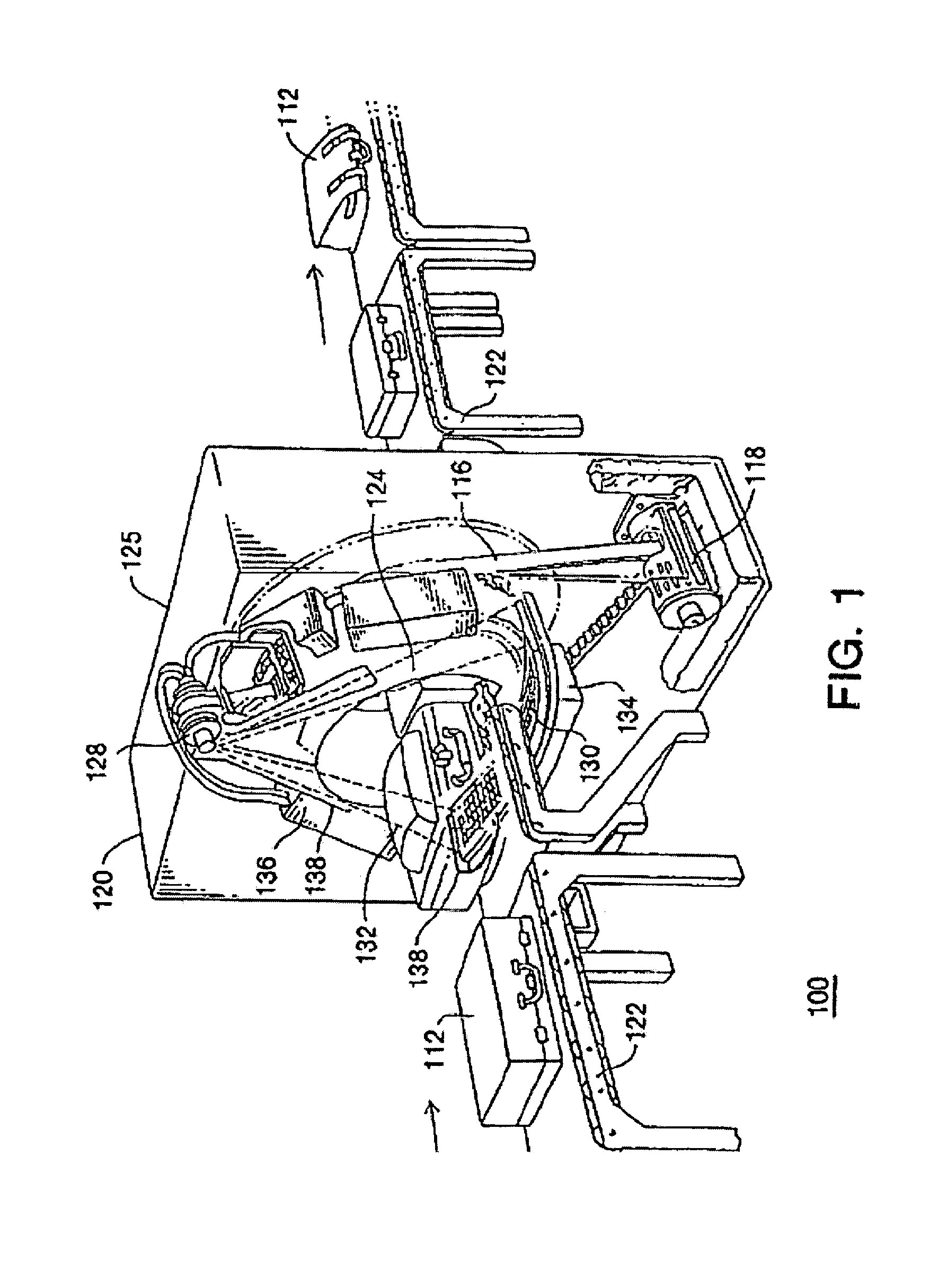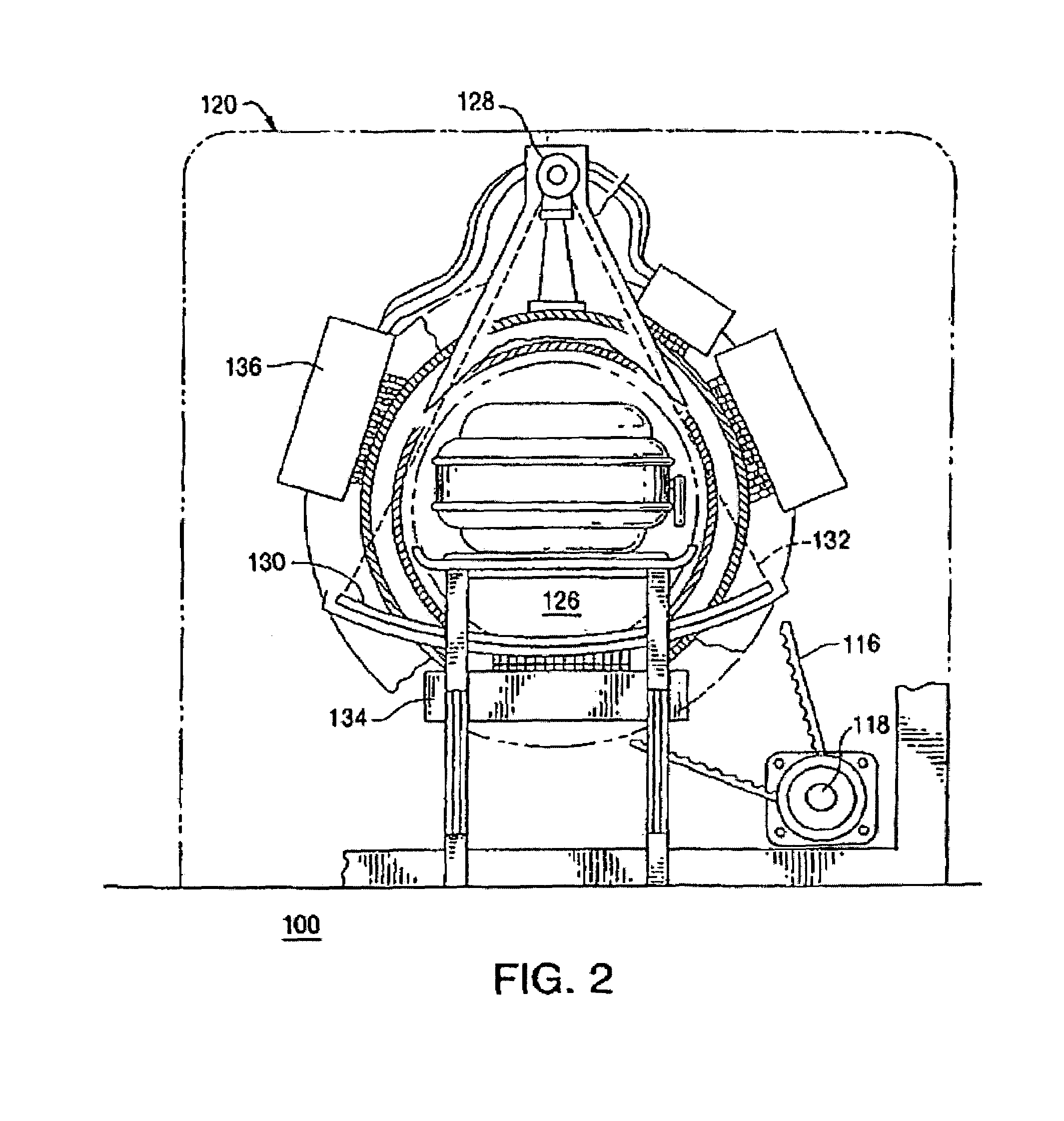Method of and system for X-ray spectral correction in multi-energy computed tomography
a multi-energy computed tomography and spectral correction technology, applied in material analysis using wave/particle radiation, instruments, nuclear engineering, etc., can solve the problems of plastic explosives, baggage scanning systems may be particularly difficult to detect plastic explosives, and plastic explosives may be formed into geometric shapes that are difficult to d
- Summary
- Abstract
- Description
- Claims
- Application Information
AI Technical Summary
Benefits of technology
Problems solved by technology
Method used
Image
Examples
Embodiment Construction
I. Overview
[0078]FIG. 6 illustrates an embodiment of a signal and data flow of the scanner system for explosive detection for the checked baggage for an airport arranged to carry out the process of the present disclosure. The scanner 120 is typically similar to the one shown in FIG. 1, modified in accordance with the teachings of the present disclosure. Scanner 120 comprises an X-ray source capable of producing a cone beam at two distinct energy levels (i.e., dual energy) at alternating view angles. Each rotation of the disk, the detectors collect a total of Vone views of data. The view angle index v ranges from 0 to Vone−1 for the Vone views. For purposes of exposition, the odd number view index corresponds to low-energy X-ray spectrum, and the even number view index corresponds to high-energy X-ray spectrum. The two energy levels are determined by the DC (Direct Current) and AC (Alternating Current) voltage supplied by the HVPS (High Voltage Power Supply) to the X-ray tube. The HV...
PUM
| Property | Measurement | Unit |
|---|---|---|
| atomic number | aaaaa | aaaaa |
| atomic number | aaaaa | aaaaa |
| thick | aaaaa | aaaaa |
Abstract
Description
Claims
Application Information
 Login to View More
Login to View More - R&D
- Intellectual Property
- Life Sciences
- Materials
- Tech Scout
- Unparalleled Data Quality
- Higher Quality Content
- 60% Fewer Hallucinations
Browse by: Latest US Patents, China's latest patents, Technical Efficacy Thesaurus, Application Domain, Technology Topic, Popular Technical Reports.
© 2025 PatSnap. All rights reserved.Legal|Privacy policy|Modern Slavery Act Transparency Statement|Sitemap|About US| Contact US: help@patsnap.com



